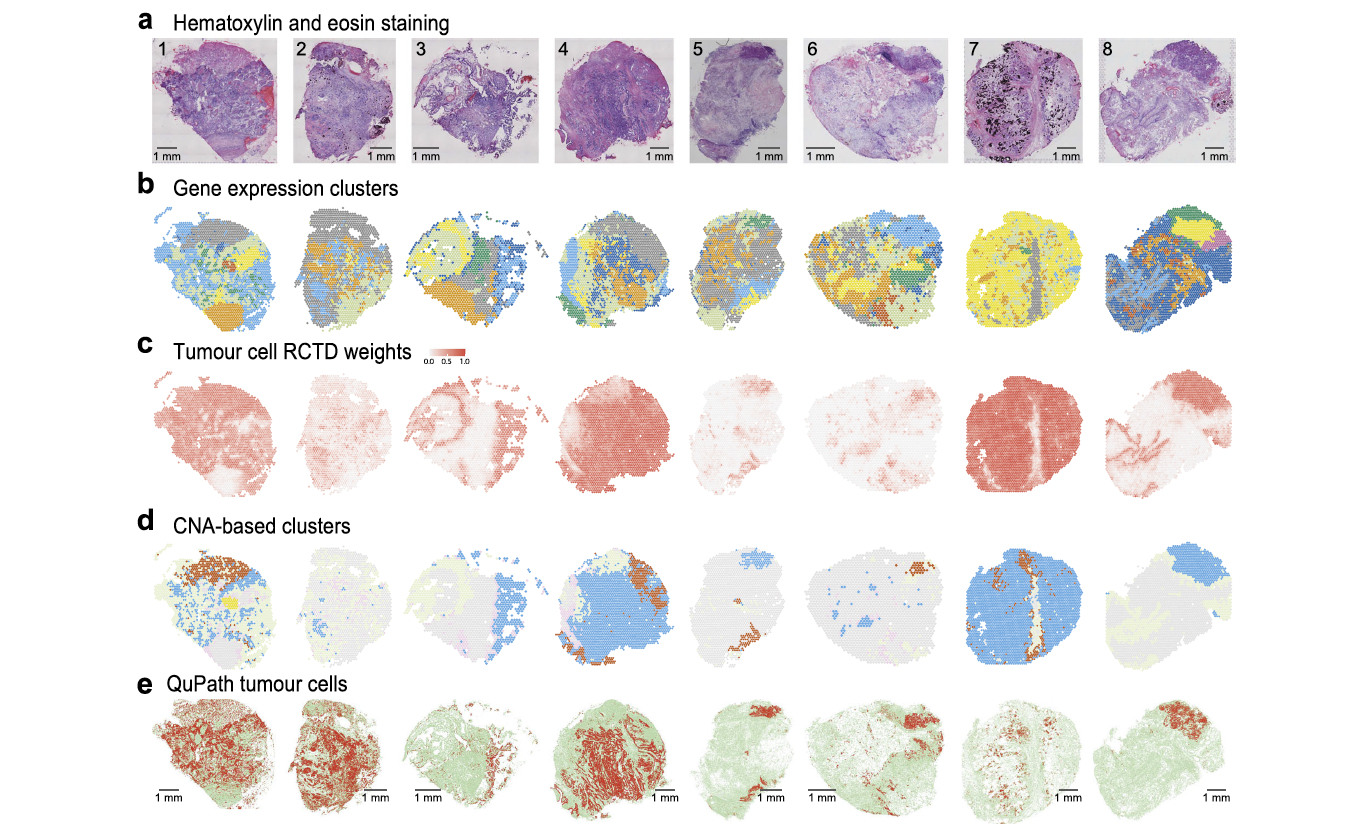Media release
From:
A cross-town collaboration involving researchers from the Harry Perkins Institute of Medical Research, St John of God Subiaco Hospital, Curtin University, Clinipath, The University of Western Australia (UWA) and Edith Cowan University has found that ovarian tumours alter their local environment by changing the sets of messages they send to cells nearby.
Using an advanced technique known as spatial transcriptomics the team generated cellular maps of ovarian cancer samples from patients in Perth who kindly donated their tumours for research.
Surprisingly, this revealed that in five of the eight samples studied, subclones (tumour cells with different mutations) co-existed in the same sample.
“These can be thought of like cancer siblings, related but a bit different. This is important as some subclones can be resistant to treatment,” said Professor Alistair Forrest, head of the Genome Biology and Genetics program at the Harry Perkins Institute of Medical Research.
Professor Paul Cohen from the Division of Obstetrics and Gynaecology at UWA, and one of the study’s investigators, said, “Understanding the biology of chemotherapy resistance in ovarian cancer is critically important to improve outcomes for our patients.”
By studying these subclones using spatial transcriptomics the team observed that some subclones were more likely to be neighboured by immune cells while others had less. Studying the genes expressed in the tumour subclones revealed that different subclones may send different protein messages to immune cells that either say come here or stay away.
“By studying subclones in such samples it may be possible to identify new drugs that can help bring immune cells into the tumour to kill it,” said Professor Forrest.
Ovarian cancer is the eighth leading cause of cancer deaths in women worldwide. High-grade serous ovarian carcinoma (HGSOC) is the most common and lethal subtype, accounting for 70-80% of ovarian cancer deaths.
“This work was only made possible by a collaborative cancer grant from the Cancer Research Trust to ‘Enable single cell cancer genomics in Western Australia’,” said Professor Forrest.
The research was generously funded by Cancer Council WA, the Cancer Research Trust and funds raised by participants in the Perkins’ major fundraising event, the MACA Cancer 200 Ride for Research.



 Australia; International; WA
Australia; International; WA


